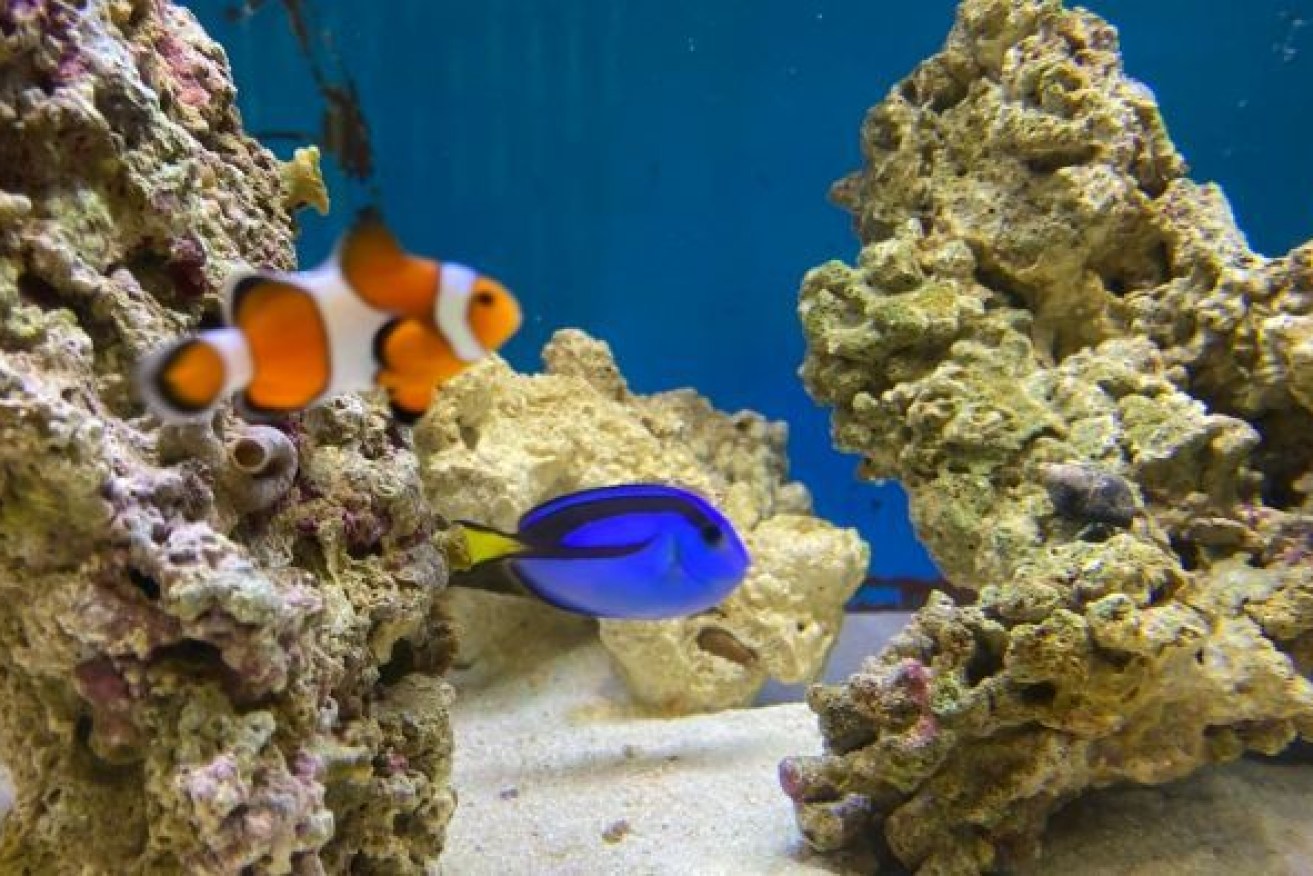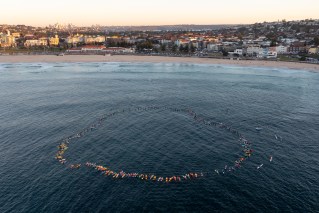Has Nemo left our clownfish in danger of being loved to death?
A Central Queensland research centre is trying to breed clownfish for pet shops in a bid to save the species from extinction.

A clownfish breeding program in Central Queensland hopes to supply them to pet shops. Photo: ABC
Tucked away in a small shed in Central Queensland is a program that is aiming to stop Nemo from disappearing from the Great Barrier Reef.
The Boyne Island Environmental Education Centre has gathered together some fish tanks and launched its Caring for Clownfish project, which aims to sustainably breed clownfish to be supplied to pet shops.
The charming little fish has become a fishtank favourite since Disney’s Finding Nemo was released in 2003, but Michael Gabriel, principal at the Boyne Island Environmental Education Centre, said its popularity has led to serious concerns about declining clownfish numbers in the wild.
“A lot of people wanted to collect clownfish for their aquariums and, unfortunately, the only way to collect those fish was to pilfer them from the reef,” Gabriel said.
“So the idea of this program is to sustainably breed our own clownfish, push them back to the pet shops and hobbyists can take fish back into their own aquariums knowing the fish have been sustainably bred.”
The centre was inspired by a similar program run by Flinders University called Saving Nemo, which calculated more than one million fish from the clownfish family were collected from the wild each year.
“About 90 per cent of aquarium fish are pilfered from the reef all over the world and with the Great Barrier Reef on our doorstep, obviously a huge amount of fish are taken from our local reef,” Gabriel said.
“As more hobbyists want to have these beautiful fish in their reef systems at home, those numbers in the actual reef are declining quite rapidly.”
Inside the Caring for Clownfish shed
Walking into the shed, the first thing you hear are the bubbles being created by air filters servicing about eight tanks with the largest tank set up to simulate a reef environment.
Gabriel points out some very familiar stars from the Finding Nemo movie.
“There is a clownfish in there and with every Nemo we maybe always want to show a little bit of a Dory, so we have a blue tang fish in there as well,” he said.
For Nemo to feel at home, the tank also features an anemone.
“The one in the large tank is a bubble-tip anemone and they are quite common, so most fish find it comfortable to live in and the anemone is happy getting a couple of pieces of prawn a day to munch on,” Gabriel said.
Many of the tanks also feature a small empty flowerpot where the clownfish can hang out.
With about 30 species of clownfish, the other tanks at the facility are home to a range of colourful species that range from black and white to bright yellow.
The fish have been at the centre since mid-2018, and Gabriel said it took some time for them to settle into their new environments.
“They need to have the right temperature, the right water salinity or the right parameters of the water chemicals,” Gabriel said.
“A whole bunch of things come together to make sure they have a really happy space to have their breeding cycle.”
Things are starting to look promising in a tank housing two dark-orange clownfish.
“At the moment they are getting to the point where they are getting frisky and they are starting to show these courting behaviours and we are hoping, fingers crossed, we are not far away from getting some eggs happening.”
How to tell if the clownfish are getting frisky?
“They do some funny behaviours, they nest in their little pots, they start to pick at the edges and clean up,” Gabriel said.
“The male will often quiver, lie on his side and show that he is happy to be part of the system.”
If all goes to plan, a batch of nearly a thousand eggs can be produced from one clownfish couple.
“Once they are hatched the little larvae take about two months to mature into juvenile fish and it’s at this stage where we get a lot of the loss,” Gabriel said.
“There is a two-week period where it can be touch and go. But we are hoping to get between 50 and a 100 fish and these guys at the centre can be laying once a month, so once they are up and going we should see quite a few young fish coming up.”
Once numbers get low, recovery can be very slow
Maya Srinivasan, a research worker at James Cook University in the College of Science and Engineering, studies reef fish ecology and finds it hard to imagine why people would want to pilfer fish from the wild.
“It’s crazy to source fish from the Great Barrier Reef because if you do a bit of homework and get your tank set up properly, you can breed them, it’s not that hard,” she said.
“We shouldn’t be collecting such rare species at all and if we do there needs to be some better training on how to sustainably harvest because if you take all of the fish out of an anemone, or you take the whole anemone out of the Reef, that of course is totally unsustainable.”
Srinivasan said the decline of anemone fish along the reef was due to a combination of fishing and bleaching. Just like corals, anemones could bleach if it got too warm.
She applauded the “Caring for Clownfish” program, saying setting up more breeding facilities like this would provide pet shops as an alternative to using collectors.
Watch out for dodgy dealers
Until the centre starts producing a good number of clownfish to provide to pet shops, Gabriel advised fish enthusiasts to look for reputable sellers.
“If you go online and are looking at different pet shops, there are some real specialty marine shops that do get a lot of their harvest from these sustainably or ethically caught fish off the Reef so that would be the first point of call,” he said.
“If the fish are cheap and from a dodgy seller, they may not be the real deal. So you are better off going through a bigger retailer where they are going through the right processes of stocking reef fish.”
The Boyne Island Environmental Education Centre also used the Caring for Clownfish project to teach local school children about sustainable harvesting from the reef.
But the big question from students has been: Have Nemo and Dory attempted an escape?
“Not at this stage, we’ve got the lids on to make sure they don’t disappear and they seem pretty friendly,” Gabriel said.
“They don’t hang out too often but all the fish are pretty comfortable with each other and we definitely did our research to make sure no fish would be harmed or eaten by each other.”
– ABC / Karyn J Wilson












